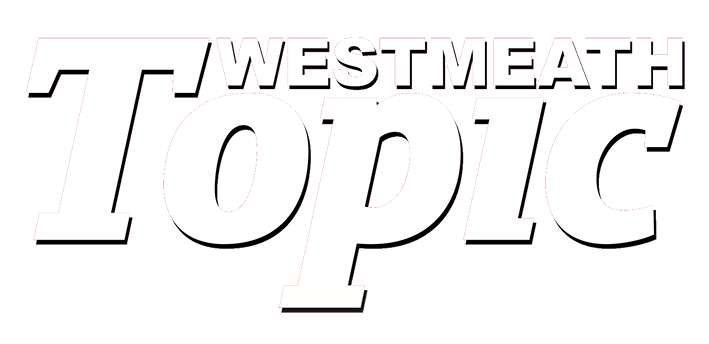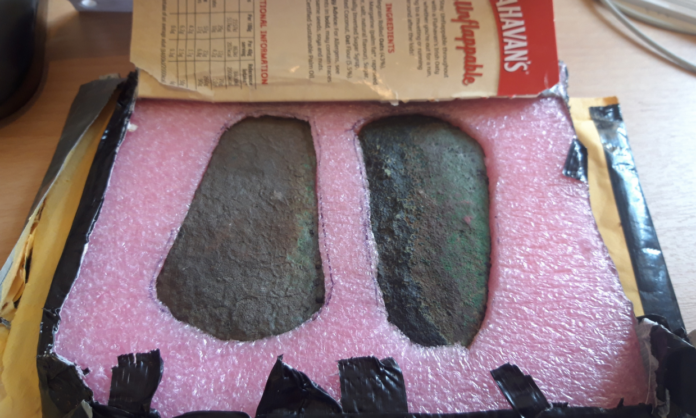The National Museum of Ireland (NMI) has appealed for information about two bronze pre-historic axeheads that it received by post, anonymously, at the end of June, 2024.
Accompanying the axeheads was a letter stating that they were found in the Westmeath area using a metal detector. The sender expressed a wish for the axeheads to be conserved by the Museum. No contact details or further specifics were provided.
The objects were carefully packed using foam cut-outs and cardboard. The NMI has been able to determine that there flat axeheads date to the Early Bronze Age, around 2150-2000 BC, and represent a significant archaeological discovery.
Irish history and national artefacts are told and kept at the NMI in Kildare Street, Dublin.
The museum’s Assistant Keeper of Irish Antiquities, Matt Seaver, said: “Our appeal is to the finder or the landowner to come forward with information about the find spot.
“Any of that information we receive would be treated in confidence and would only be used to fill out the details of the object which are important to archaeologists and to local people and to the people of Ireland.”
The anonymous letter sent to the museum contained a reason for the secrecy.
Mr Seaver stated: “They didn’t give any of their personal details because they were aware of the restriction on the use of detection devices to search for archaeological objects.”
The use of metal detectors is highly restricted in Ireland. It is against the law to use a metal detector to search for archaeological objects without ministerial consent with possible penalties including fines of €60,000 and up to three months in jail.
GREATER UNDERSTANDING OF WESTMEATH HISTORY
Given the significance of the objects found, the NMI said the find context, meaning the exact place in which the object is found, is of fundamental importance to their understanding and provenance.
Distribution patterns of archaeological sites allow archaeologists to understand ancient settlements. Information on where they were found will contribute to a greater understanding of prehistory in Westmeath.
The NMI is currently involved in an international study of Bronze Age metalwork which aims to understand the origins of the metal used to make these types of artefacts. Any information about where the axeheads were discovered could provide crucial pieces of information for this study.
Mr Seaver said: “We are very excited about the discovery of these Early Bronze Age axeheads, but we can only understand their true value by knowing their find location.
“I want to take this opportunity to remind the public to be mindful of the legal obligation to report the discovery of archaeological objects. It is the role of the NMI to collect and preserve these objects on behalf of everyone in the State, so that they are available for generations to come. We rely on the support of the public to do this.”














